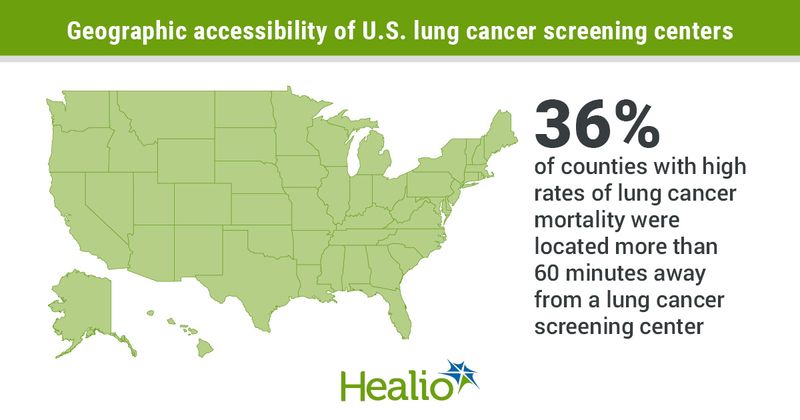36% of US counties with high lung cancer rates at least 1 hour from screening center
A new study identified U.S. counties with high rates of lung cancer where travel times to a dedicated screening center exceed 60 minutes.

The underserved areas are primarily located in Appalachia and the southeastern United States, according to data scheduled for presentation at the American Thoracic Society International Conference.

“Screening for lung cancer needs to be done in facilities that offer responsible, high-quality, low-dose CT screening,” Soumya J. Niranjan, BPharm, MS, PhD, assistant professor at the School of Health Professions at the University of Alabama at Birmingham, told Healio. “Long travel distance and times to a screening facility may be a barrier that hinders high-risk individuals from seeking screening on a regular schedule.”
Niranjan and colleagues aimed to better understand this disparity by analyzing geographic accessibility of U.S. Screening Centers of Excellence in counties of the 48 contiguous states and Washington, D.C. The researchers correlated drive time to the facilities to identify underserved areas, and evaluated lung cancer mortality rates in the affected counties.
Overall, 1,140 counties (35%) were categorized as having high lung cancer mortality (> 53.2%), according to the results.
Of those counties with high lung cancer mortality rates, 416 (36%) were beyond 60 minutes’ drive time from a screening center. In these counties, the lung cancer mortality rate was 64.5 per 100,000, with a total combined population of approximately 61 million, according to the abstract.
“Our study characterizes geographic access to lung cancer screening centers and demonstrates that people who live in rural areas may suffer from fewer preventive and screening services,” Niranjan told Healio.

